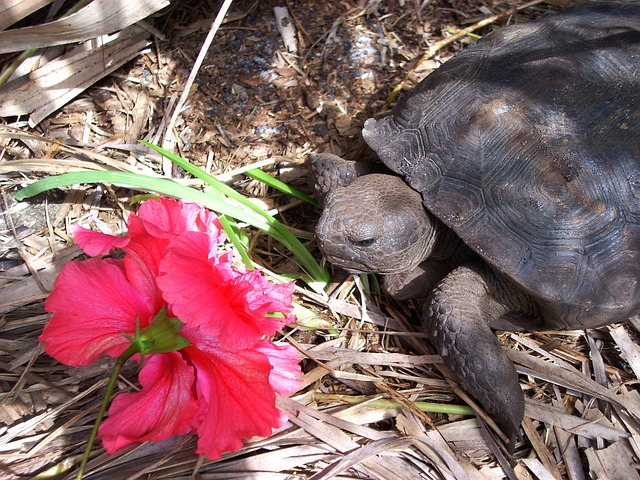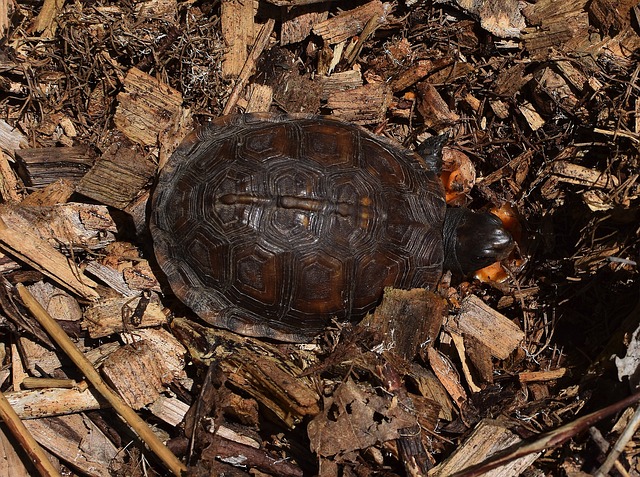BOX TURTLE
 Box turtles are one of America’s favorite turtles and can be a rewarding pet if given the proper care. Although they spend much of their time on land, Box turtles need constant access to shallow freshwater and high levels of humidity. Box turtles have fascinating personalities and will quickly begin to recognize their keeper. With a varied diet that includes every food group, feeding box turtles is easy. There are 6 species of Box turtles; however basic care requirements are very similar for them all. It is important to remember that turtles are long lived animals and many will live more than 20-40+ years. Keeping a turtle is a long-term commitment and needs to be considered before purchasing. Always buy captive bred Box turtles.
Box turtles are one of America’s favorite turtles and can be a rewarding pet if given the proper care. Although they spend much of their time on land, Box turtles need constant access to shallow freshwater and high levels of humidity. Box turtles have fascinating personalities and will quickly begin to recognize their keeper. With a varied diet that includes every food group, feeding box turtles is easy. There are 6 species of Box turtles; however basic care requirements are very similar for them all. It is important to remember that turtles are long lived animals and many will live more than 20-40+ years. Keeping a turtle is a long-term commitment and needs to be considered before purchasing. Always buy captive bred Box turtles.
Common Name: Box Turtle
Scientific Name: Terrapene carolina, T. ornata
Distribution: Eastern and Central United States
Size: 4-7″
Life Span: 20-40+ years
HABITAT
Hatchlings and turtles under 3 years of age can be housed in a 20 gallon long terrarium. Box turtles will do best if kept outdoors in temperatures that do not fall below 50°F in winter. If being kept indoors, an adult Box turtle will need at least a 30 gallon terrarium. Turtles can be taken outdoors to provide natural sunlight when temperatures permit.
HEATING
Daytime Terrarium Temperature: 70-80° F
Basking Spot: 85-87°F
Nighttime Temperature: 65-75°F
Basking lamps, Mercury Vapor, Ceramic Heat Emitter, and under tank heater are good choices for heating box turtle enclosures. Heat Bulbs are a good supplemental heating source. Zoo Med’s ReptiTherm Habitat Heater is a great choice for heating large enclosures, or outdoor turtle houses. A Thermostat and rheostat will help maintain proper temperatures. Always monitor temperatures closely with a thermometer.
LIGHTING
UVB Lighting is essential for Box turtles to process calcium in captivity. Without UVB lighting turtles will develop serious health problems such as Metabolic Bone Disease (MBD), abnormal shell growth and possible eye sores. UVB Lighting should be left on for 10-12 hours per day and turned off at night. Linear fluorescent and Compact Fluorescent Lamps are a great choice for providing UVB. The mercury vapor bulb is an excellent way to provide both UVB and heat all in one lamp! Let you turtles have access to natural sunshine whenever possible, and always remember to provide a shaded area where they can retreat from the sun if needed and make sure you contain your turtle or keep a very close eye on them. They can run of very quickly.
SUBSTRATES
A mixture of Eco Earth coconut husk & Forest Floor cypress mulch is the most preferred substrate for Box turtles. Create the optimum substrate mix with 1/3 Forest Floor cypress mulch, 1/3 Eco Earth coconut fiber, and 1/3 ReptiSand. We recommend providing a deep 4″+ of substrate to allow your turtle to burrow. We recommend providing a gradient of moisture for your turtle. This gradient can be created by keeping moistened moss and Eco Earth in one corner, and drier Eco Earth or cypress mulch on the opposite side. Your turtle will move between these areas as needed.
NUTRITION
 Box turtles are opportunistic omnivores and will eat a wide variety of foods. Variety is the key to raising and keeping healthy box turtles. Insects, meat/fish, grasses, fruits, and vegetables are all part of a natural Box turtle diet. Ornate Box turtles are more carnivorous than the rest and will require more protein in their diet. Canned Box turtle food is an excellent staple diet for all box turtles. Add live insects to the mash to entice reluctant turtles to begin feeding. Pellet foods are an excellent choice of maintenance diet because it offers a variety of high quality ingredients that are similar to the diversity of foods found in the wild.
Box turtles are opportunistic omnivores and will eat a wide variety of foods. Variety is the key to raising and keeping healthy box turtles. Insects, meat/fish, grasses, fruits, and vegetables are all part of a natural Box turtle diet. Ornate Box turtles are more carnivorous than the rest and will require more protein in their diet. Canned Box turtle food is an excellent staple diet for all box turtles. Add live insects to the mash to entice reluctant turtles to begin feeding. Pellet foods are an excellent choice of maintenance diet because it offers a variety of high quality ingredients that are similar to the diversity of foods found in the wild.
Canned insects make offering a variety of feeder insects easy and convenient. Fruit mixes are a great treat to be offered to box turtles and a great addition to your “mash”. It is essential to supplement your turtle’s diet with calcium and vitamins as directed to provide balanced nutrition. A calcium block is a great way to offer calcium and help maintain your turtle’s beak. When giving your turtle any grasses make sure that any grasses or plants offered have not been treated with pesticides or other chemicals.
WATER
Provide fresh water every day. Using a ram to allow your turtle to access their bowl is recommended. Make sure water levels are kept shallow to avoid accidental drowning. Maintain humidity at 40-50% for adults, and 60-70% for hatchlings. ReptiFogger, spray bottle misting, can help to maintain precise levels of humidity. Always monitor humidity levels using a hygrometer. Offering dampened moss on the cool end of the enclosure will give your turtle a moist refuge for burrowing.

